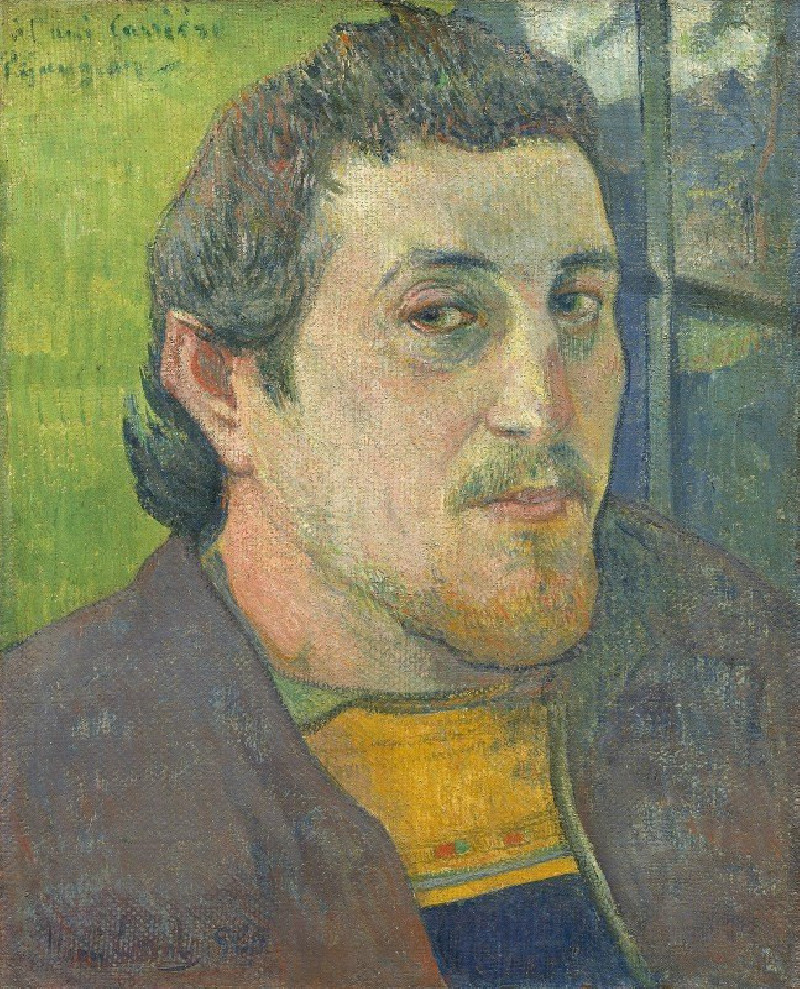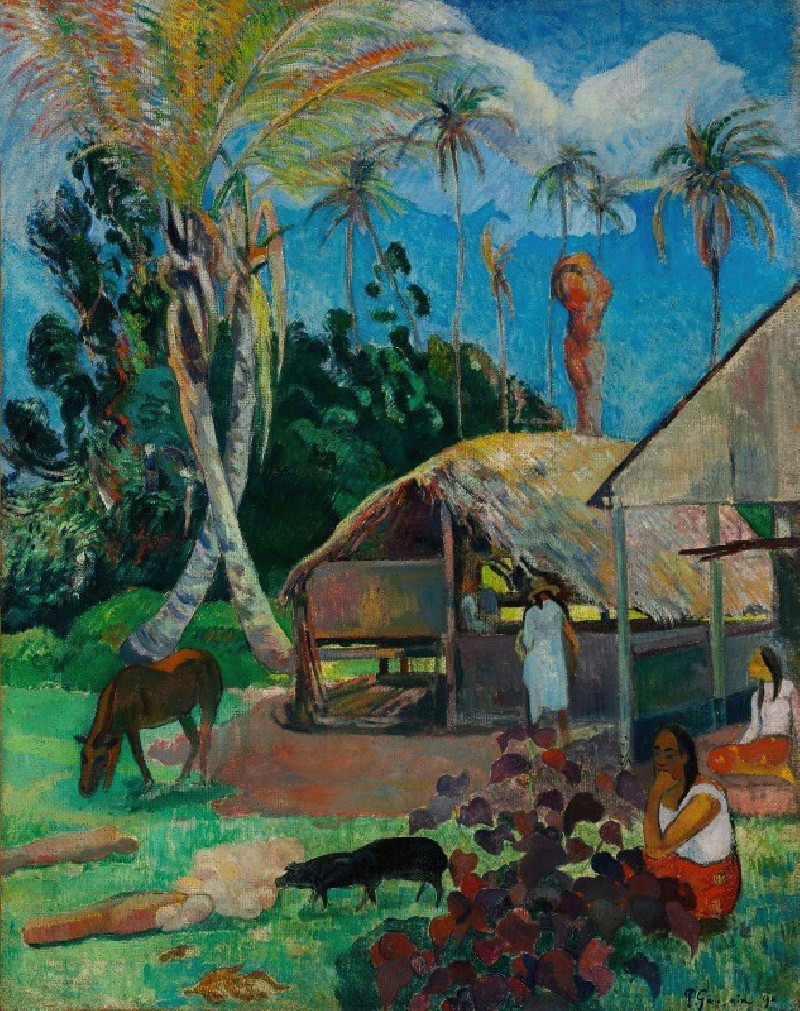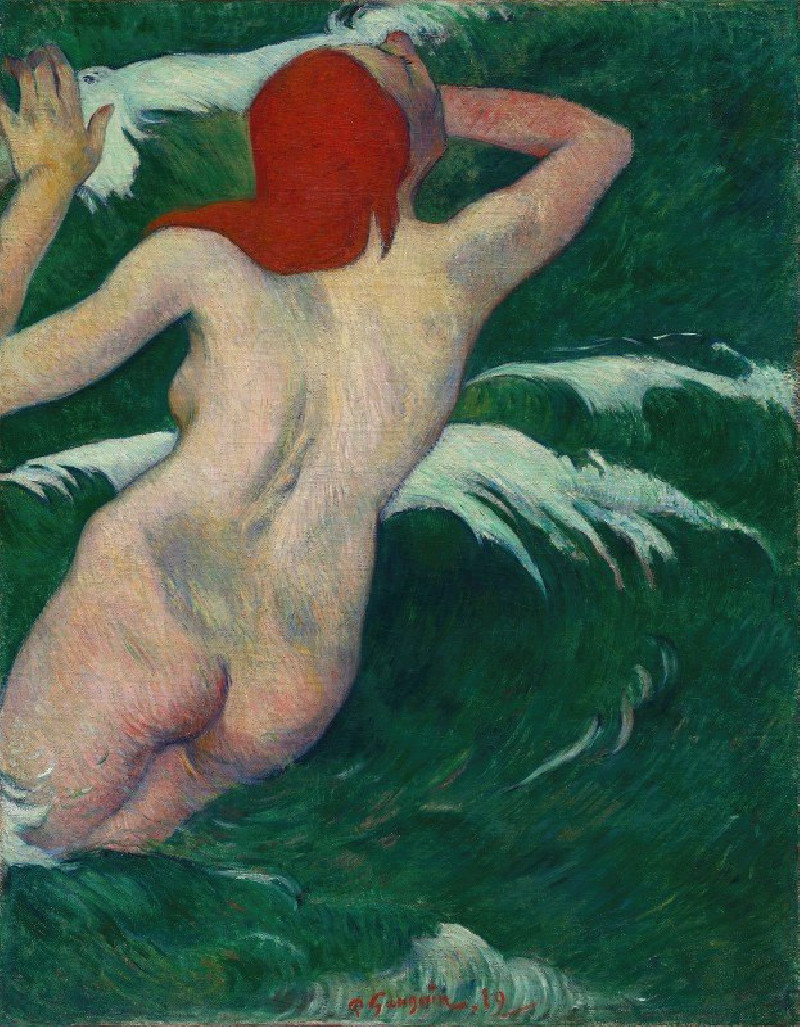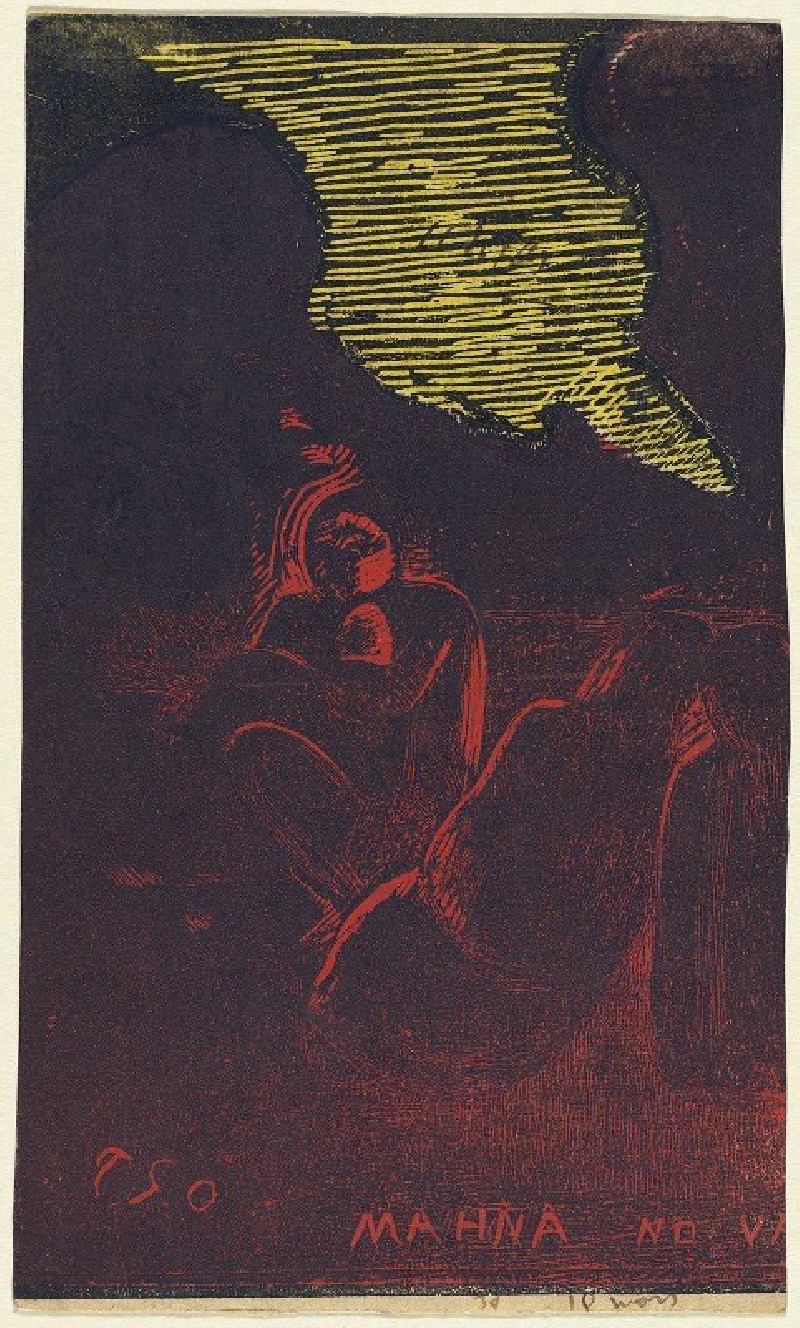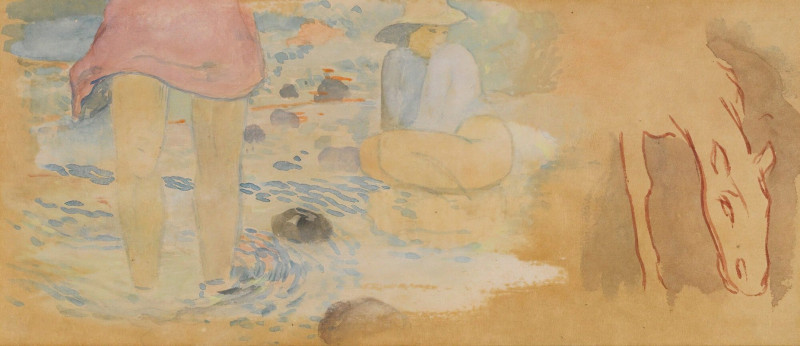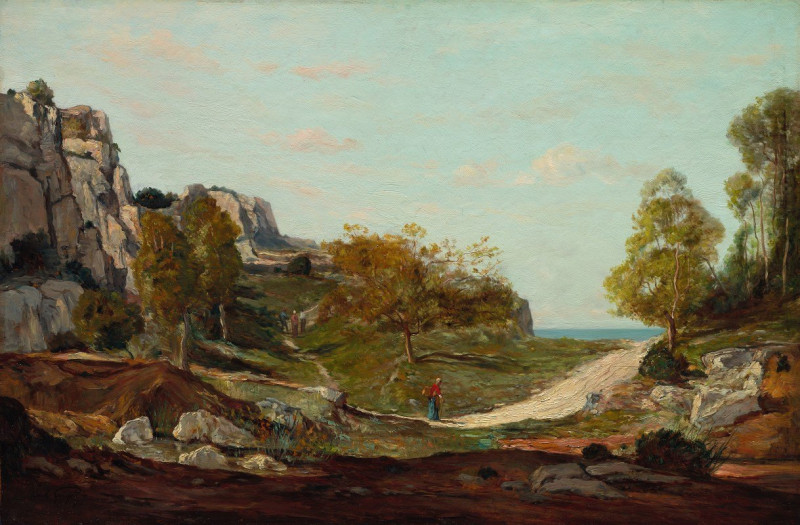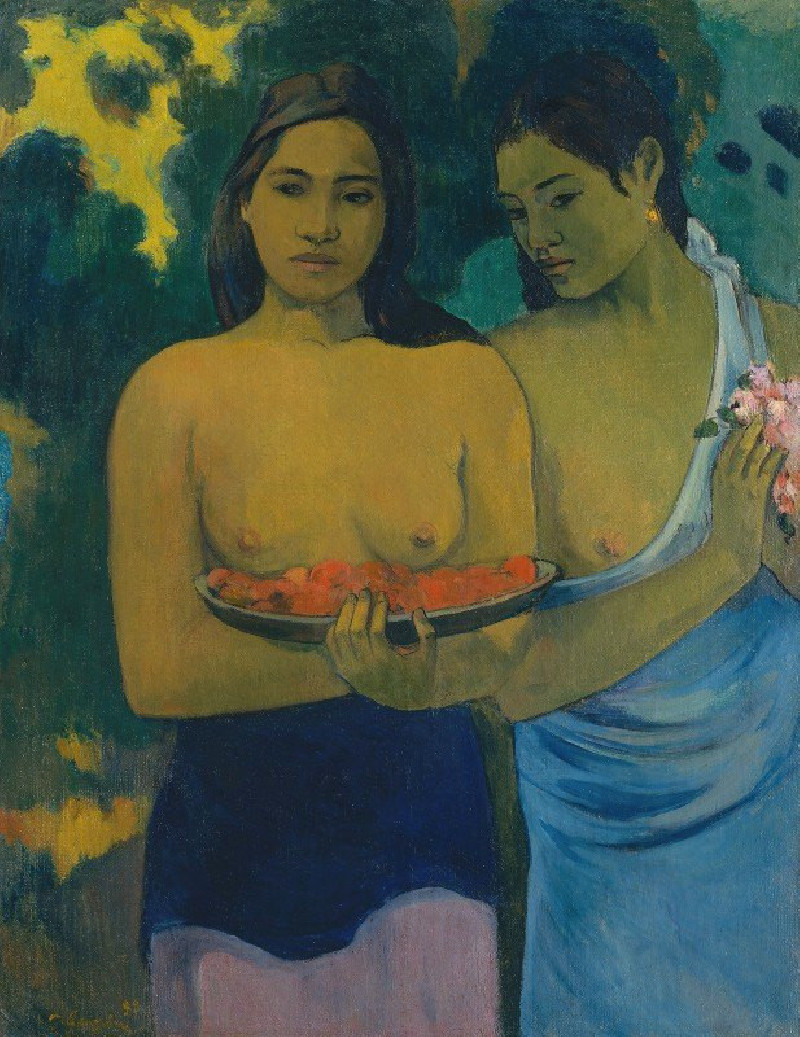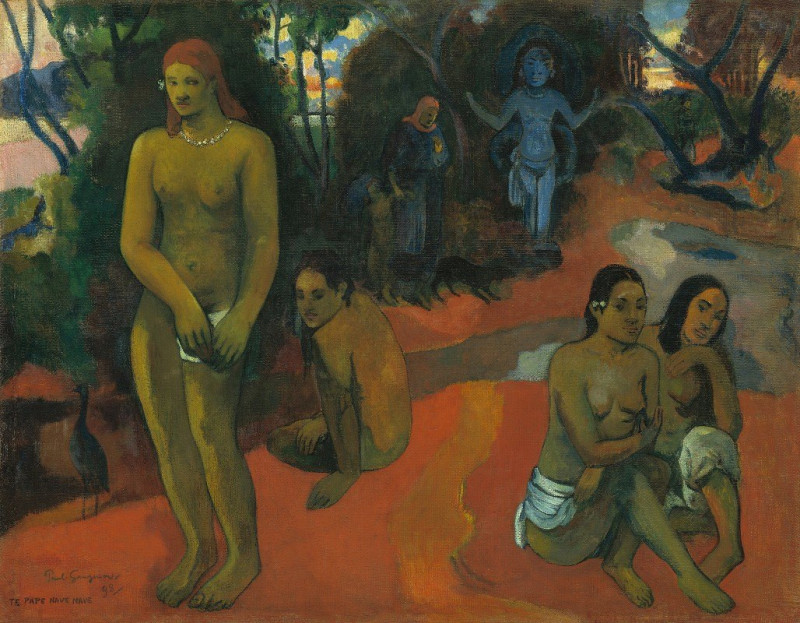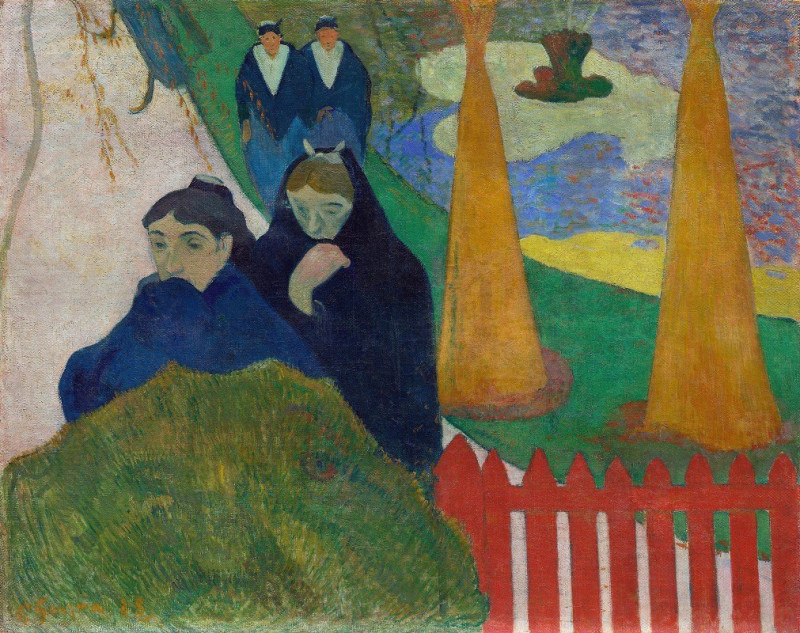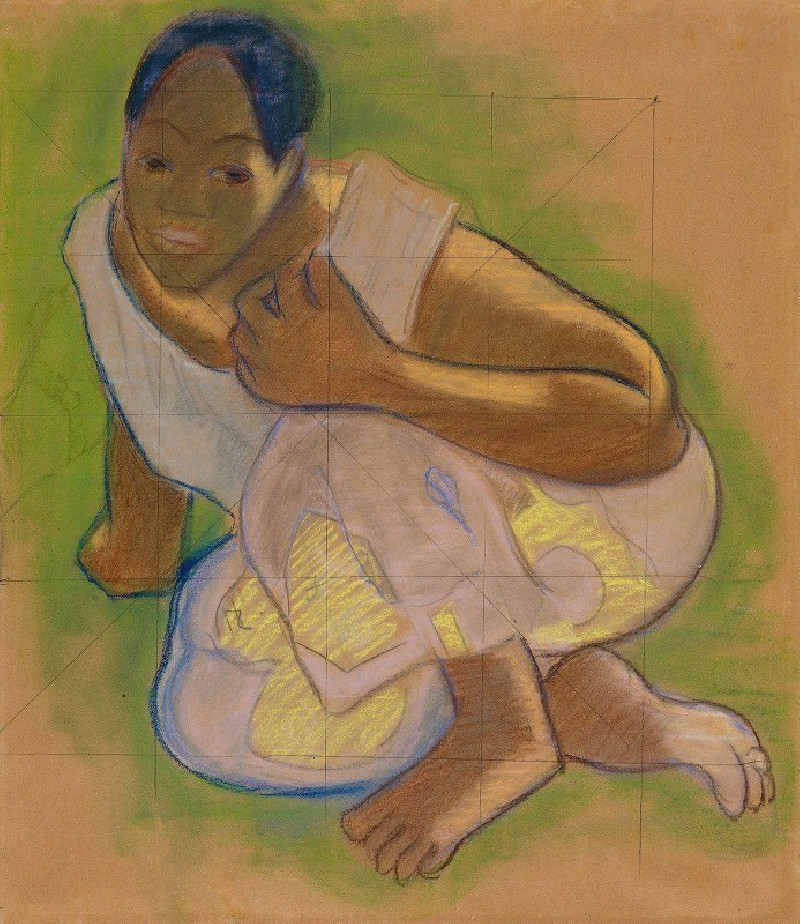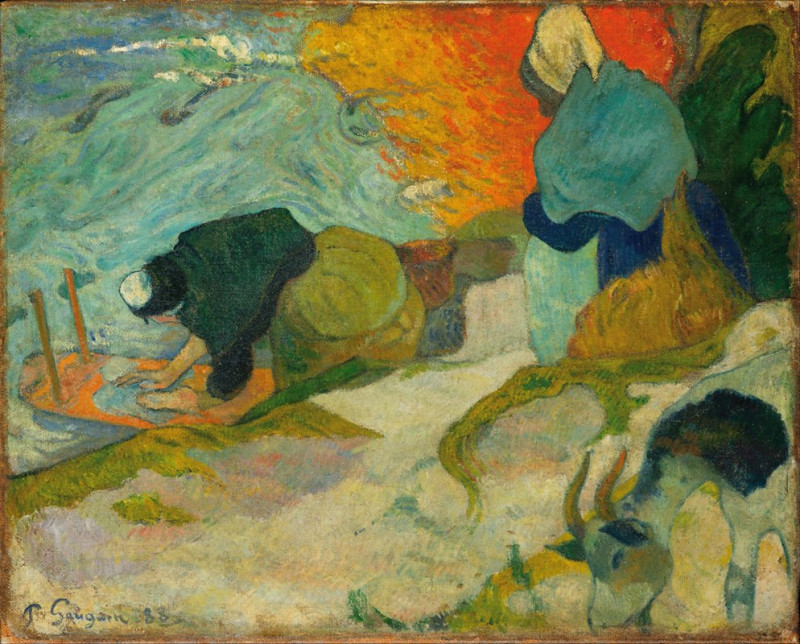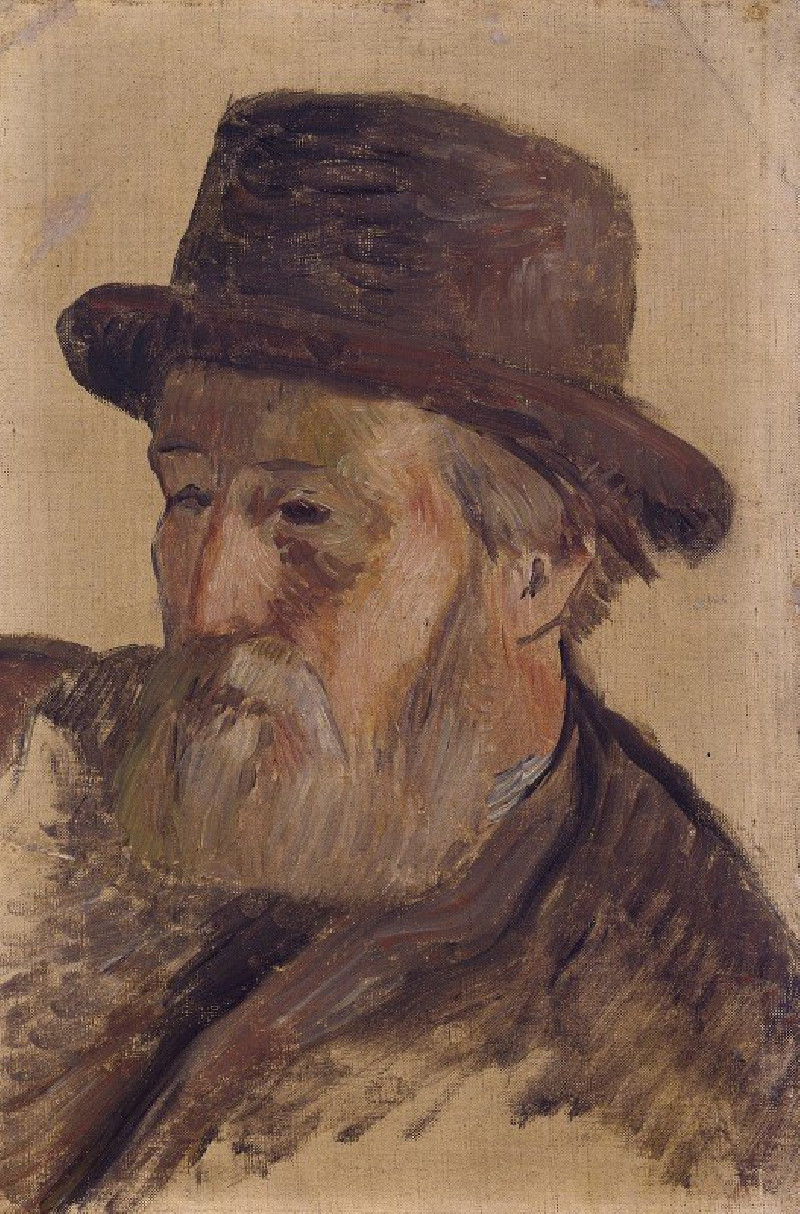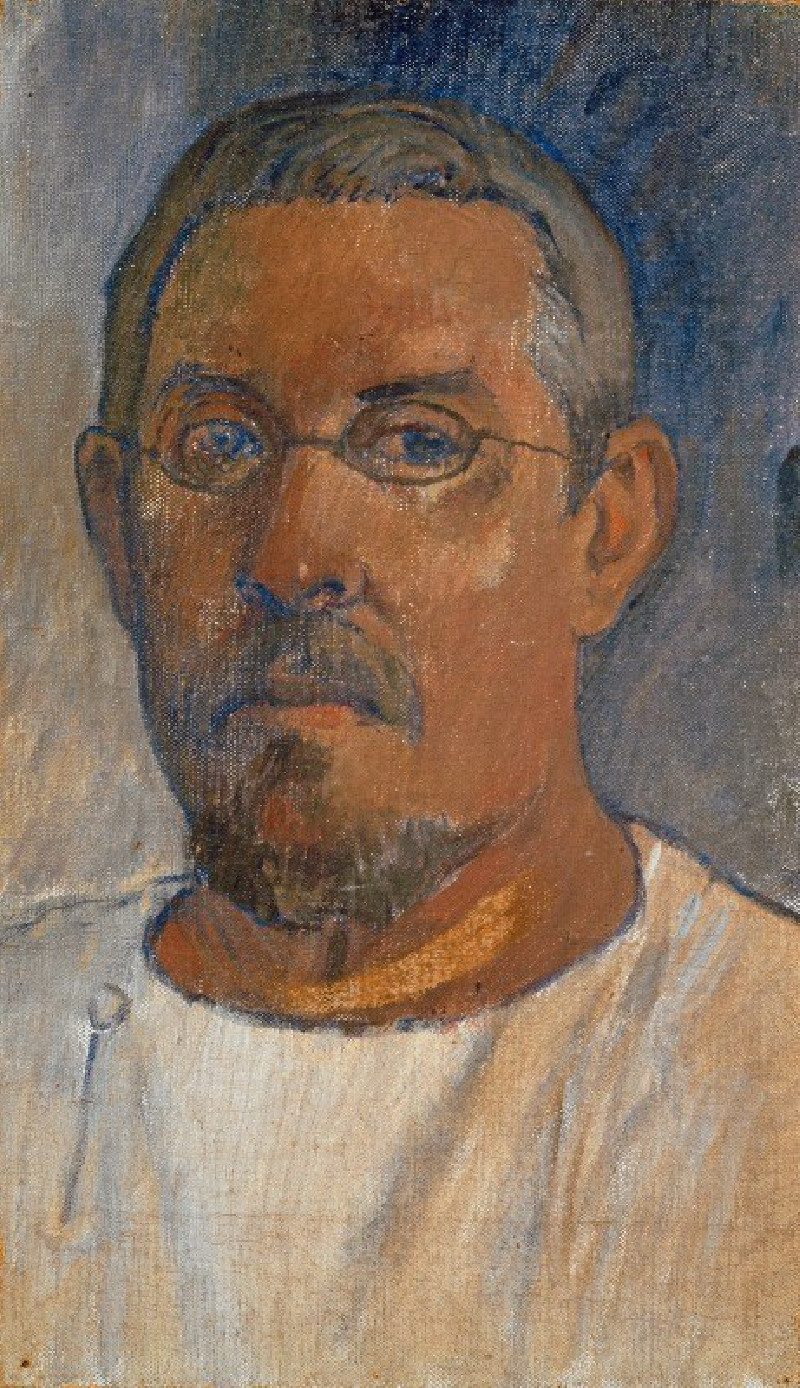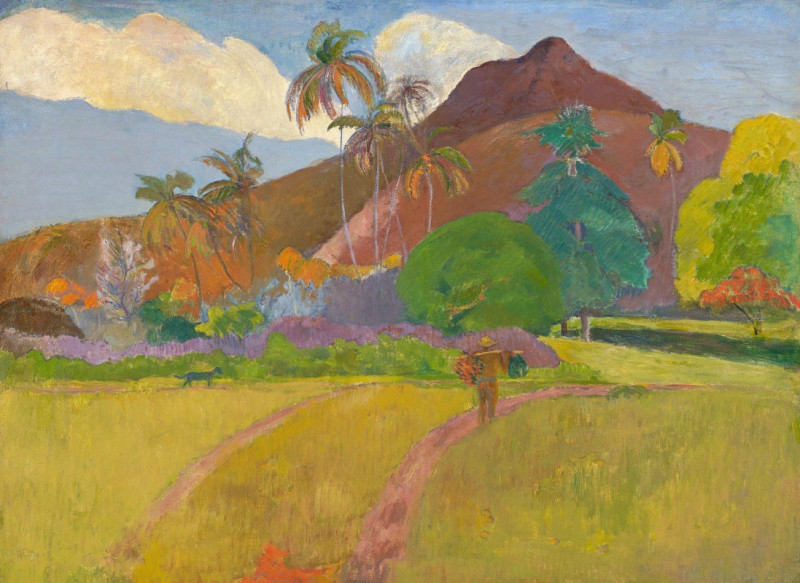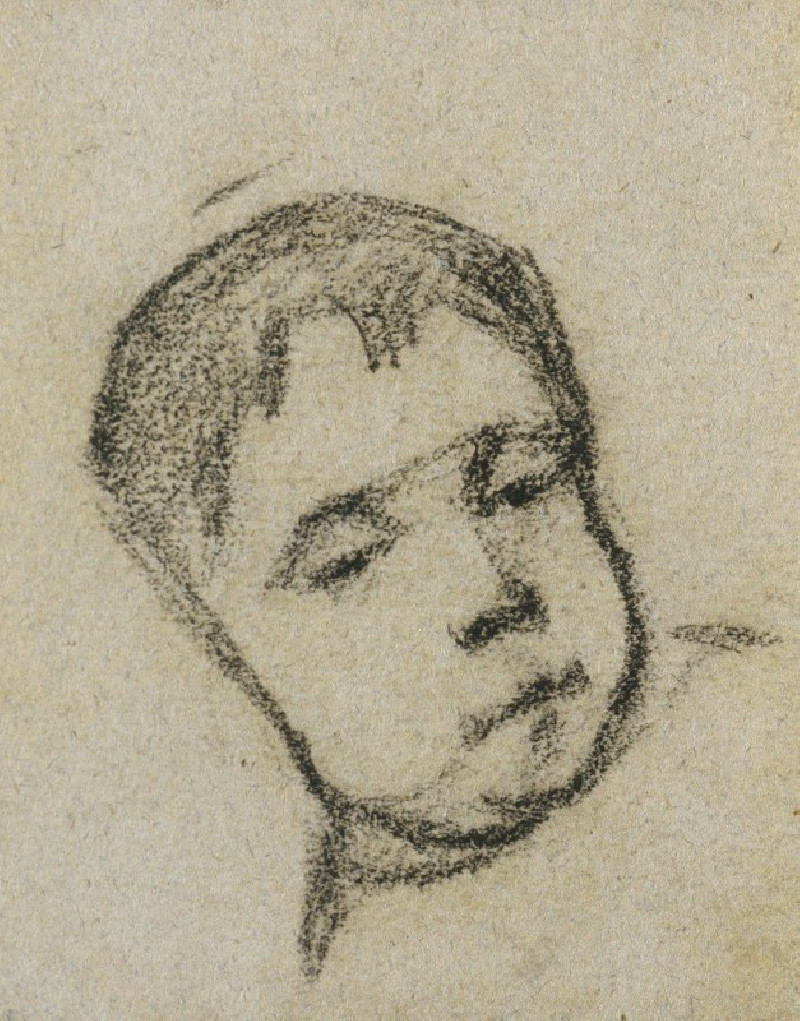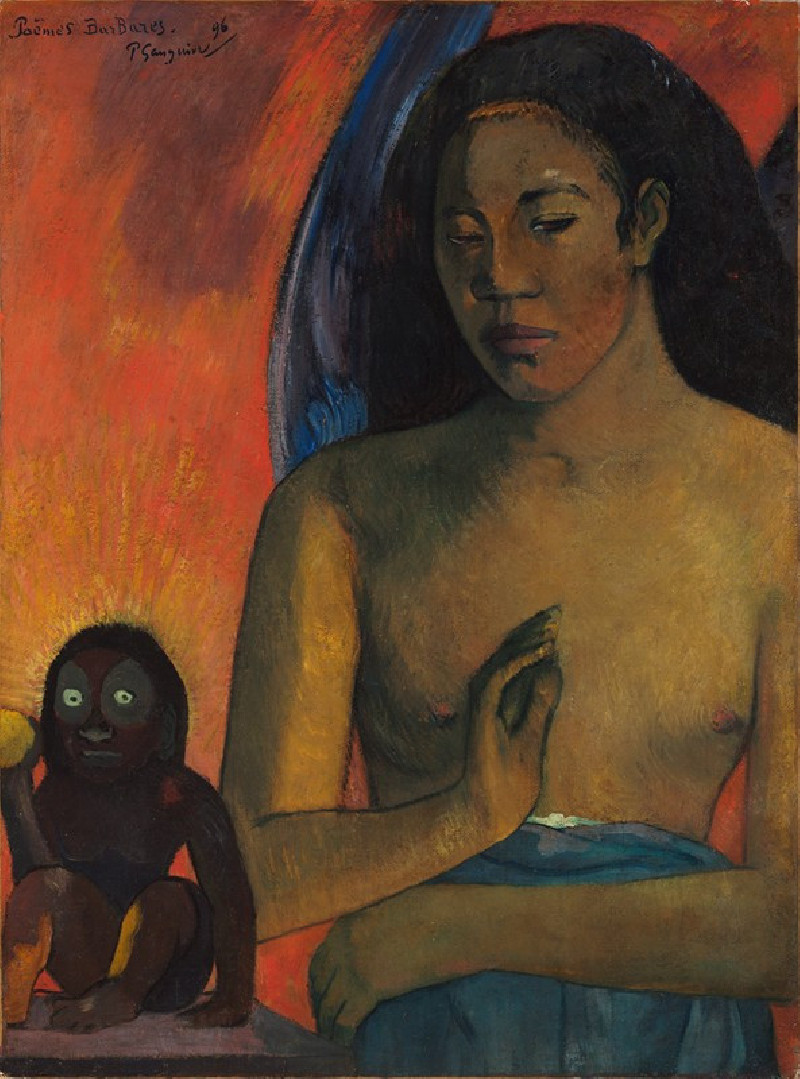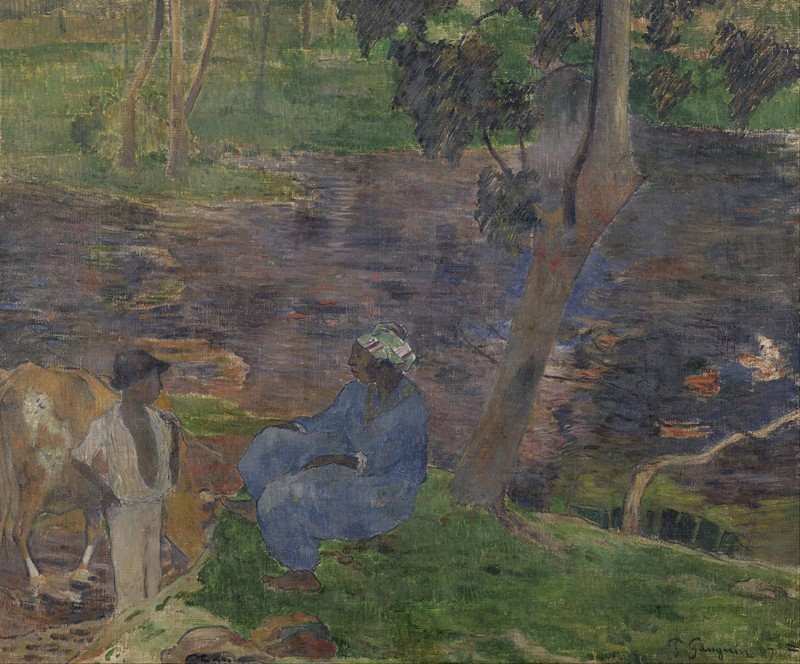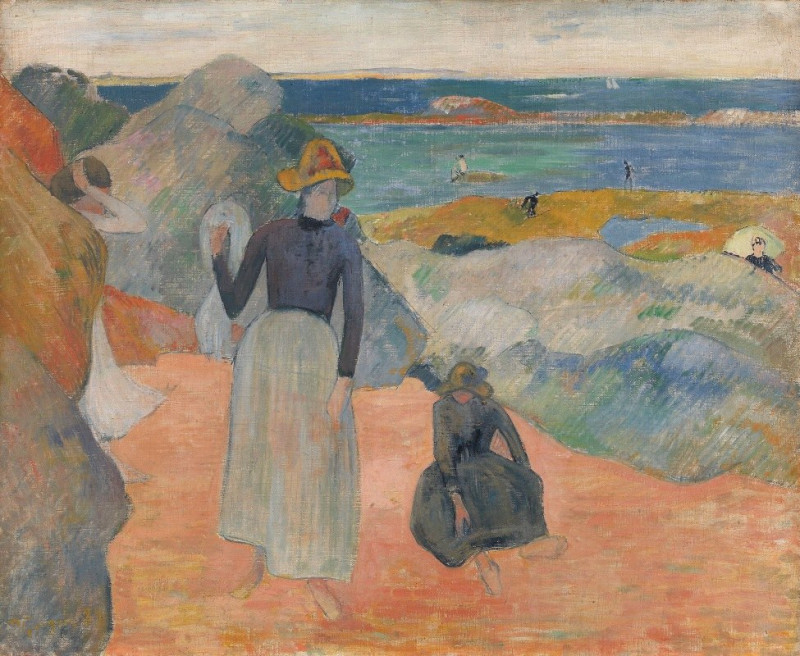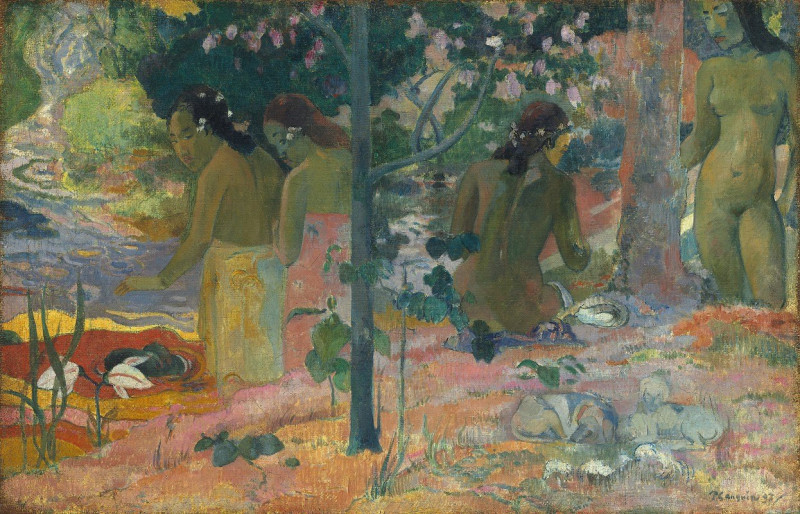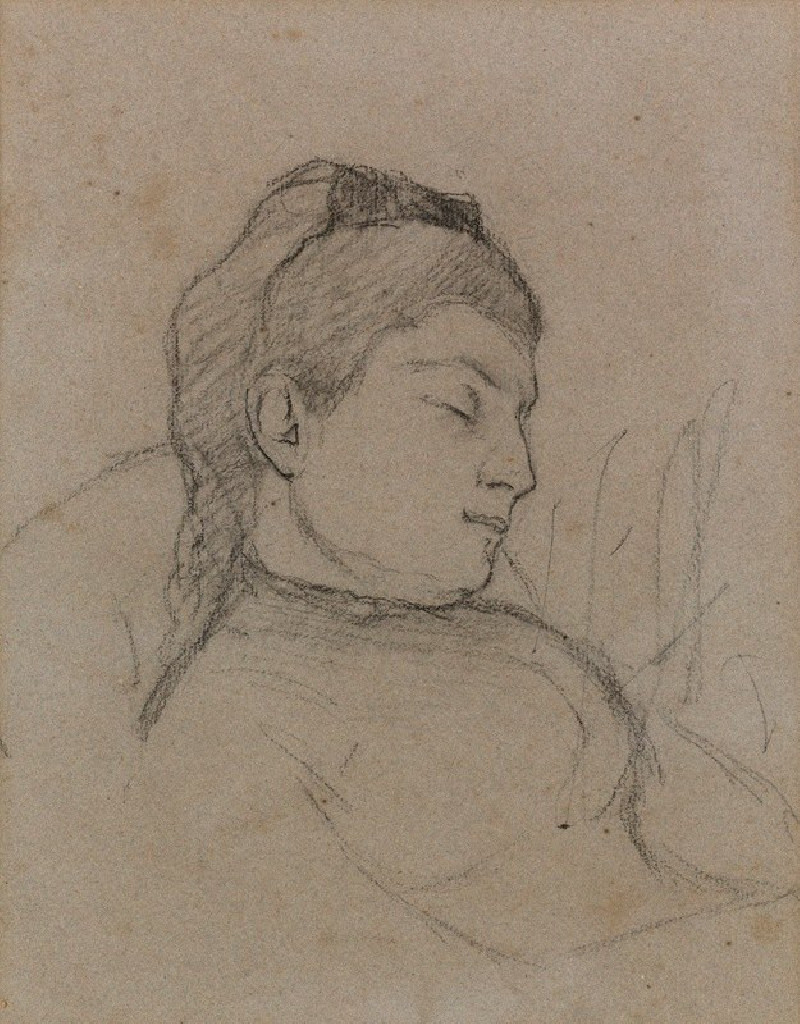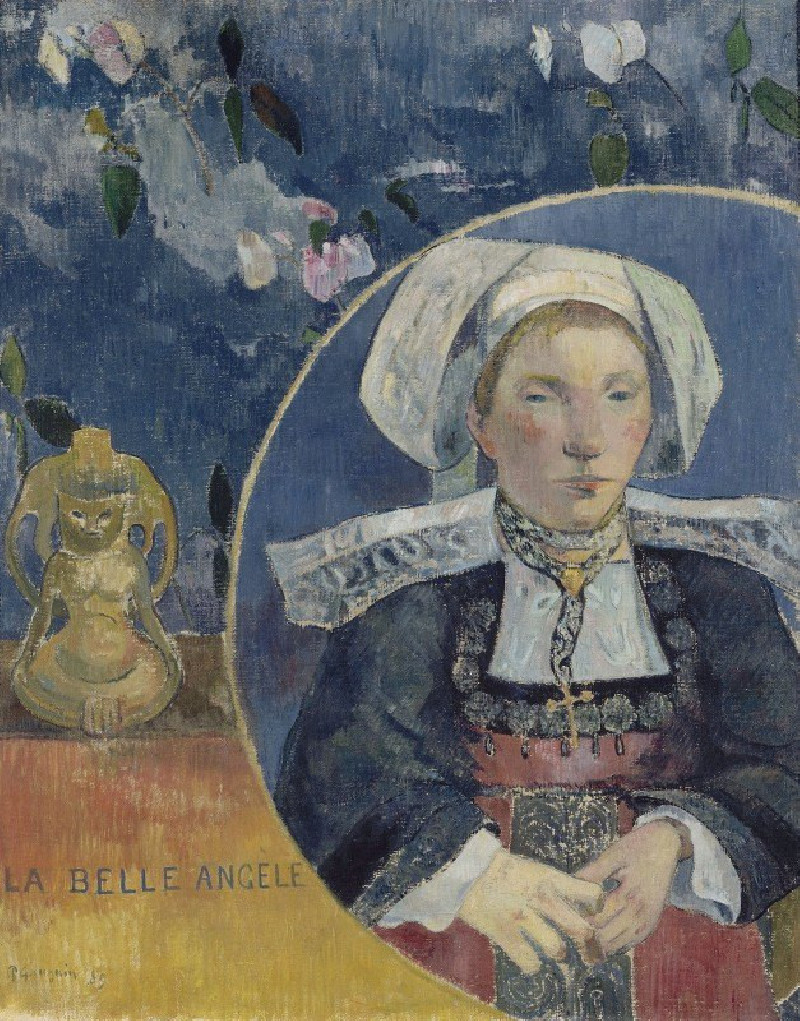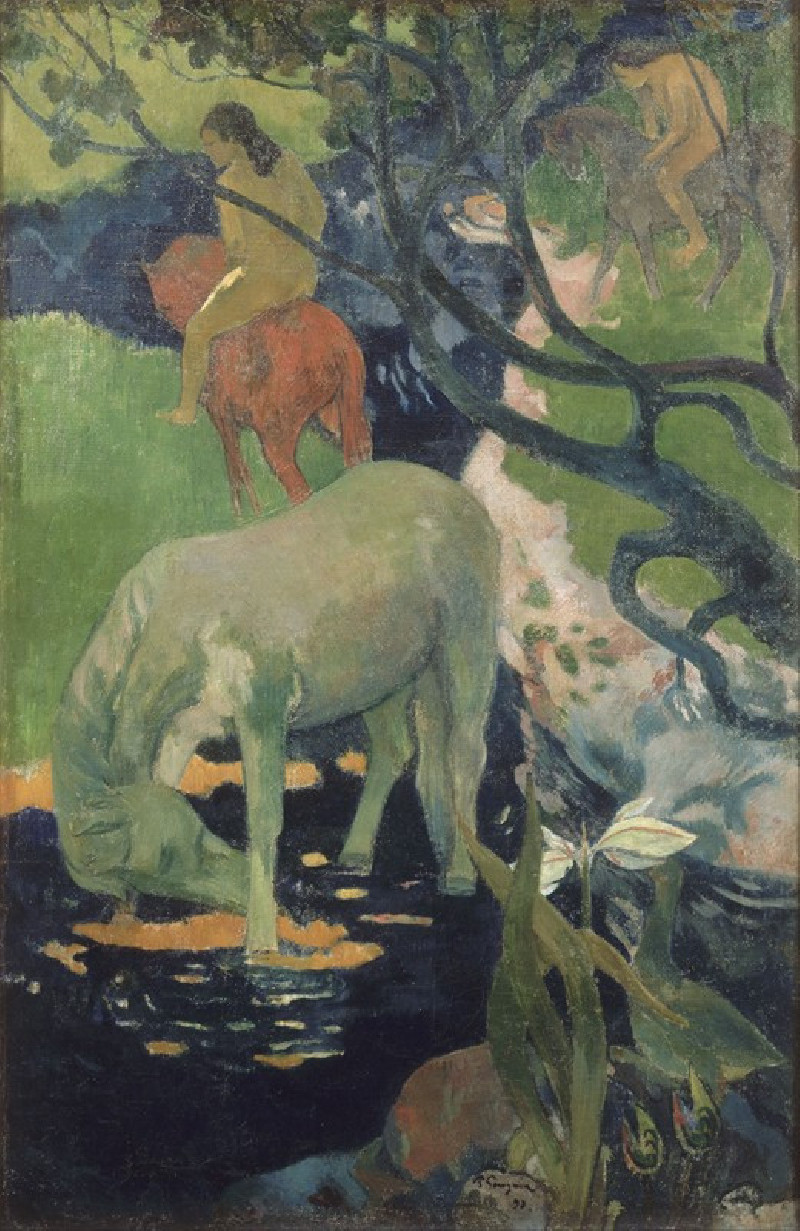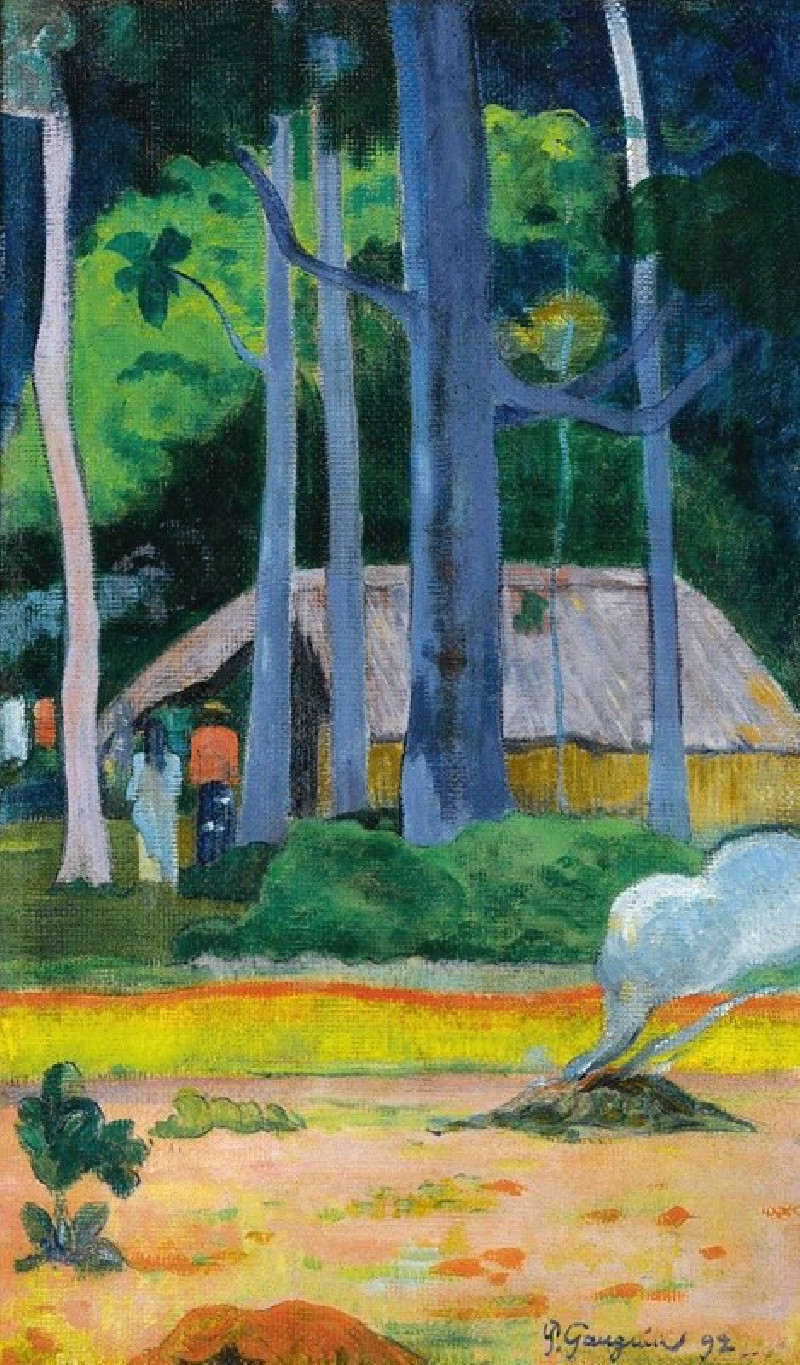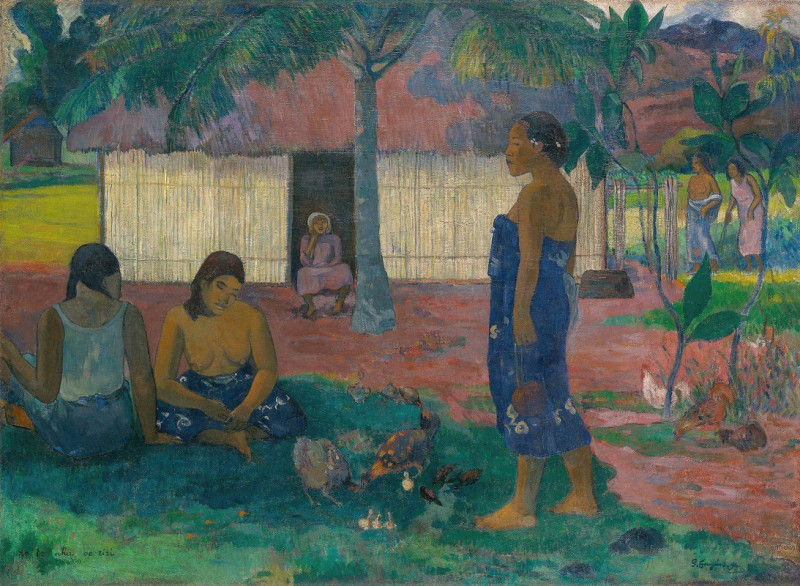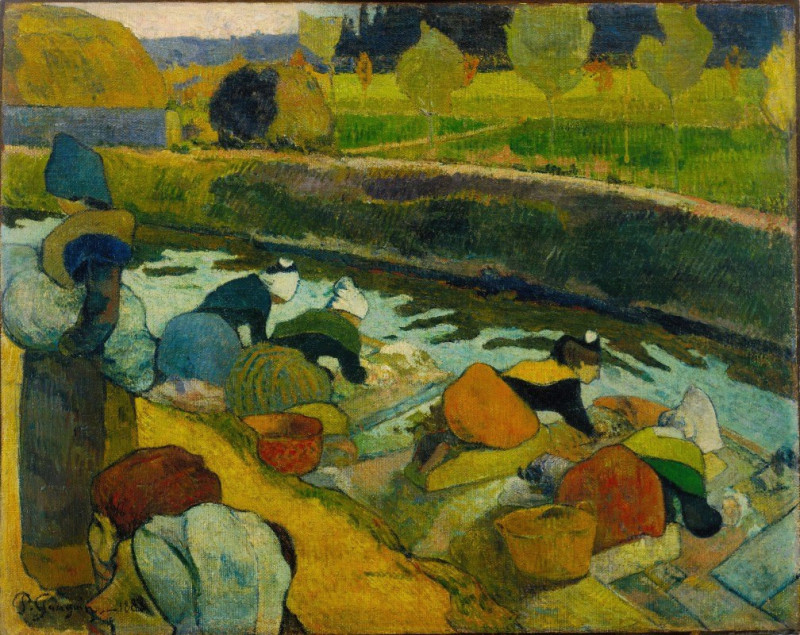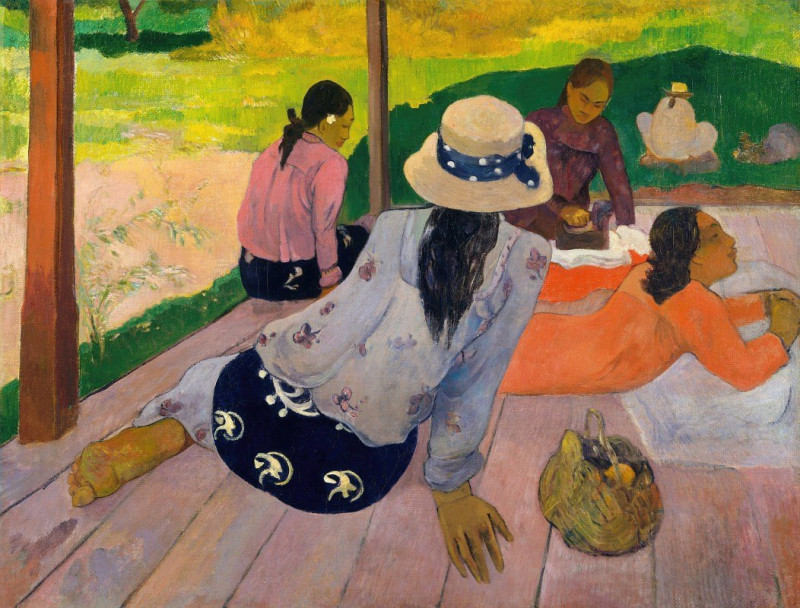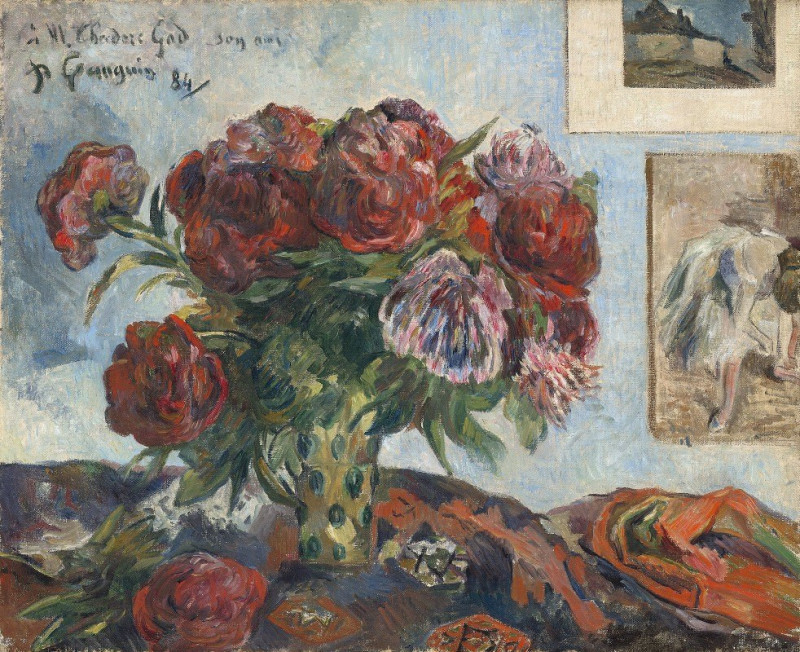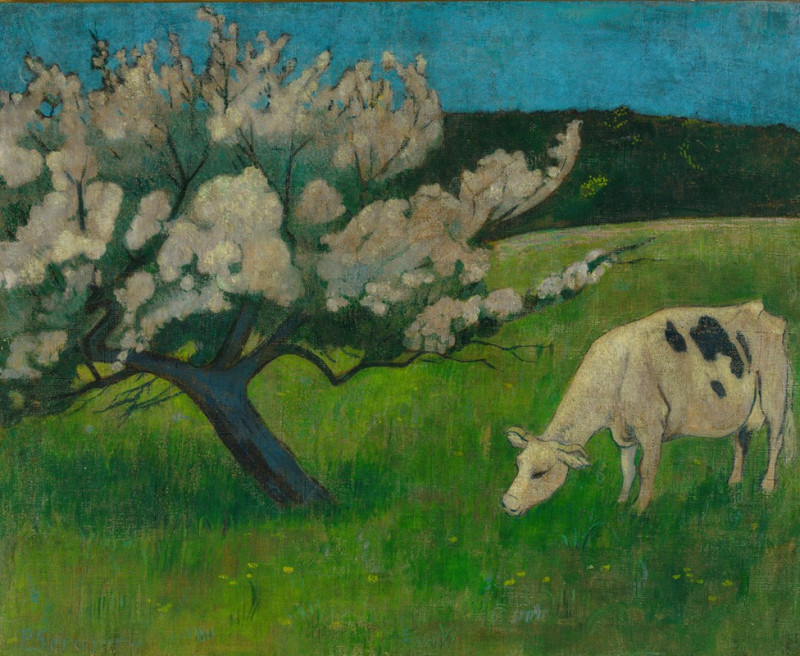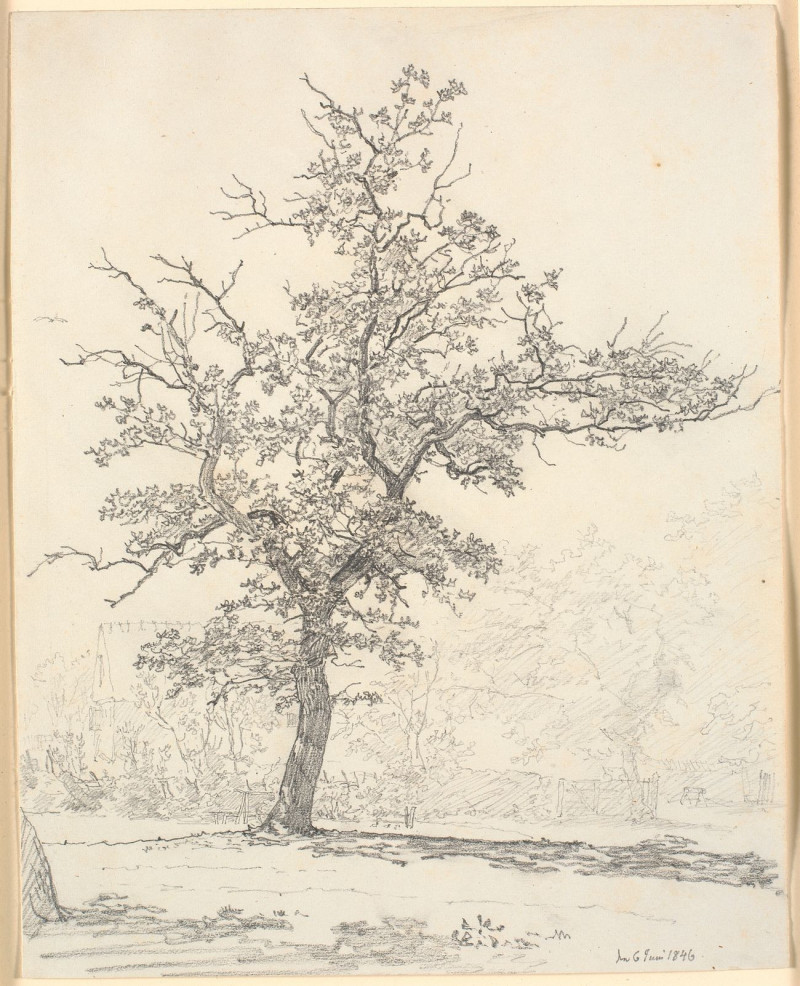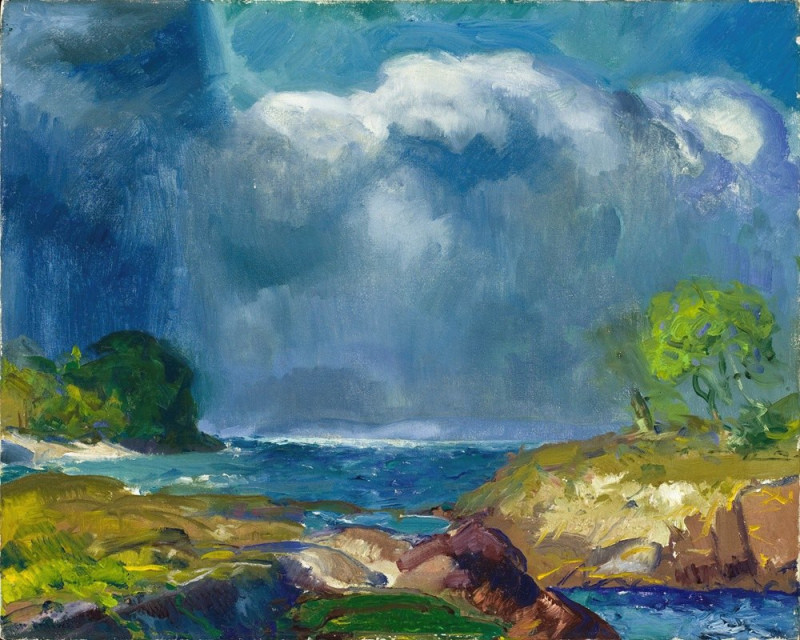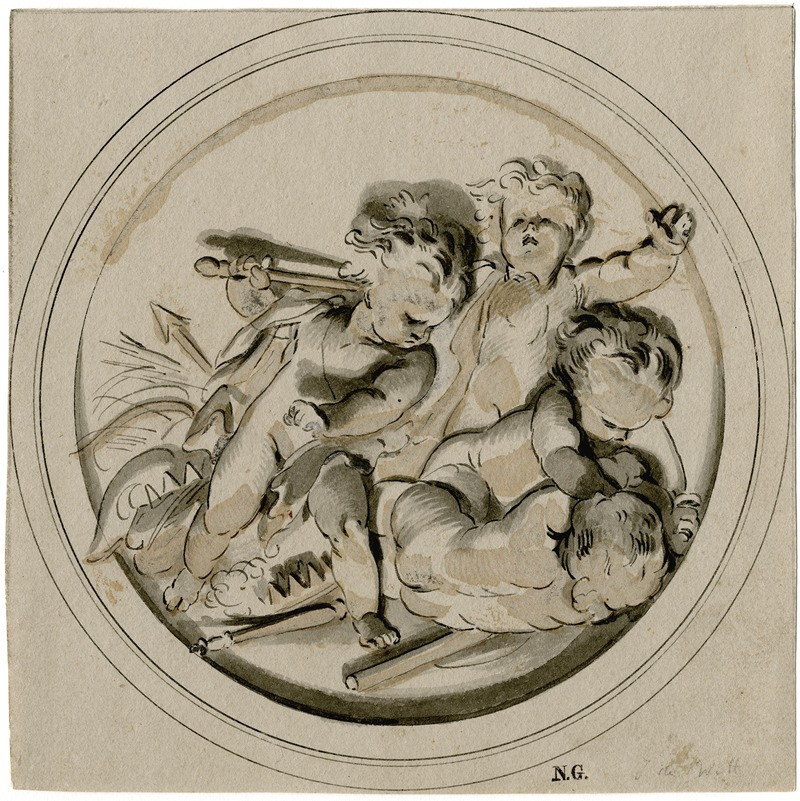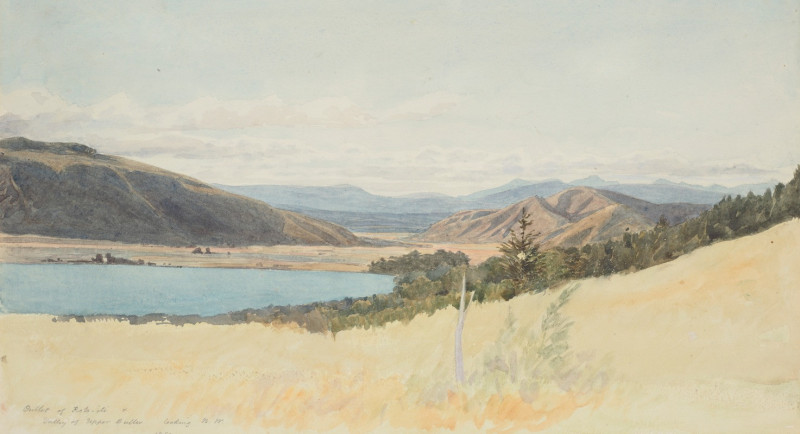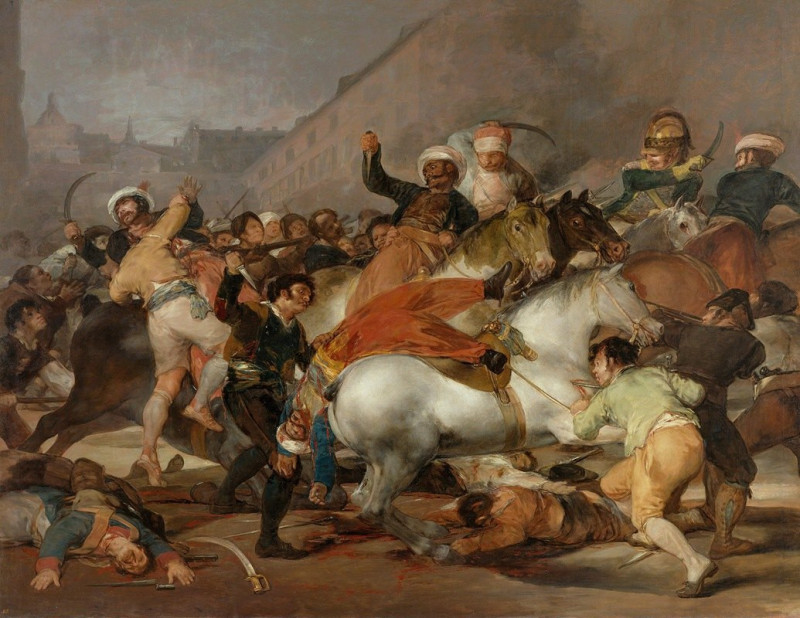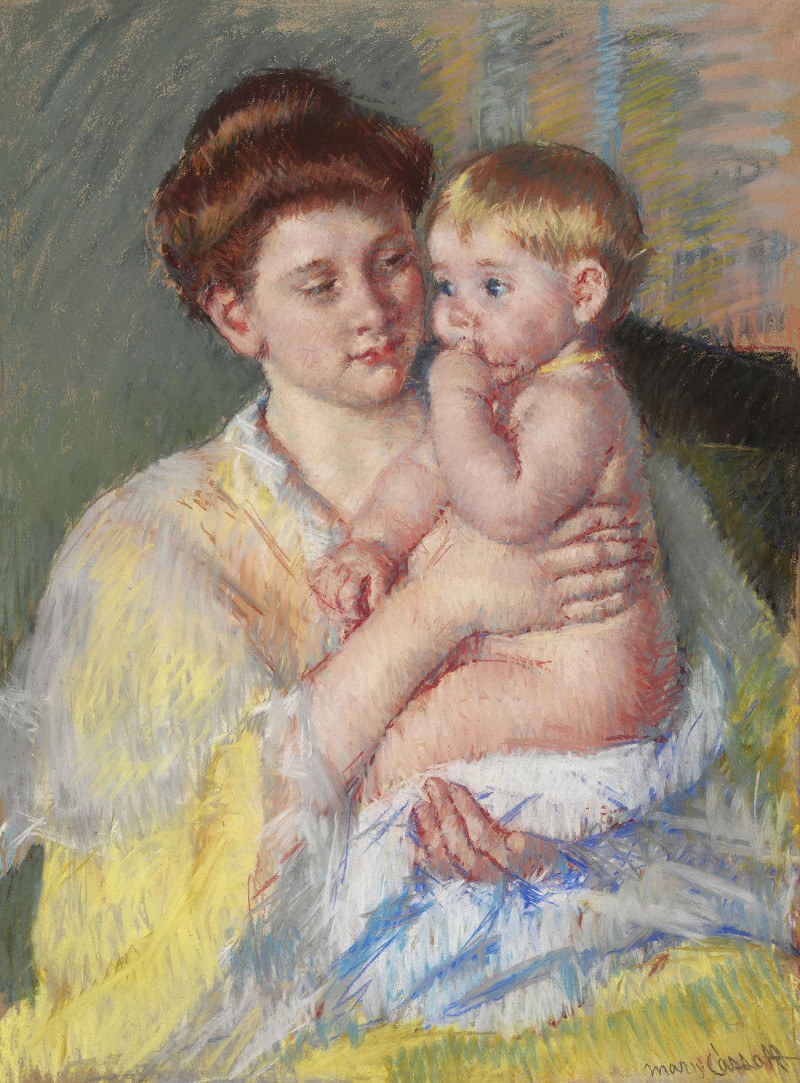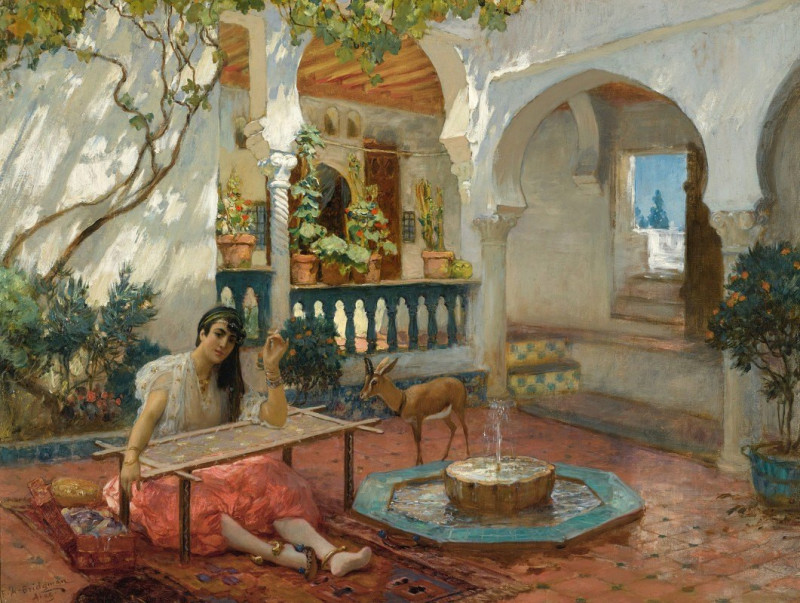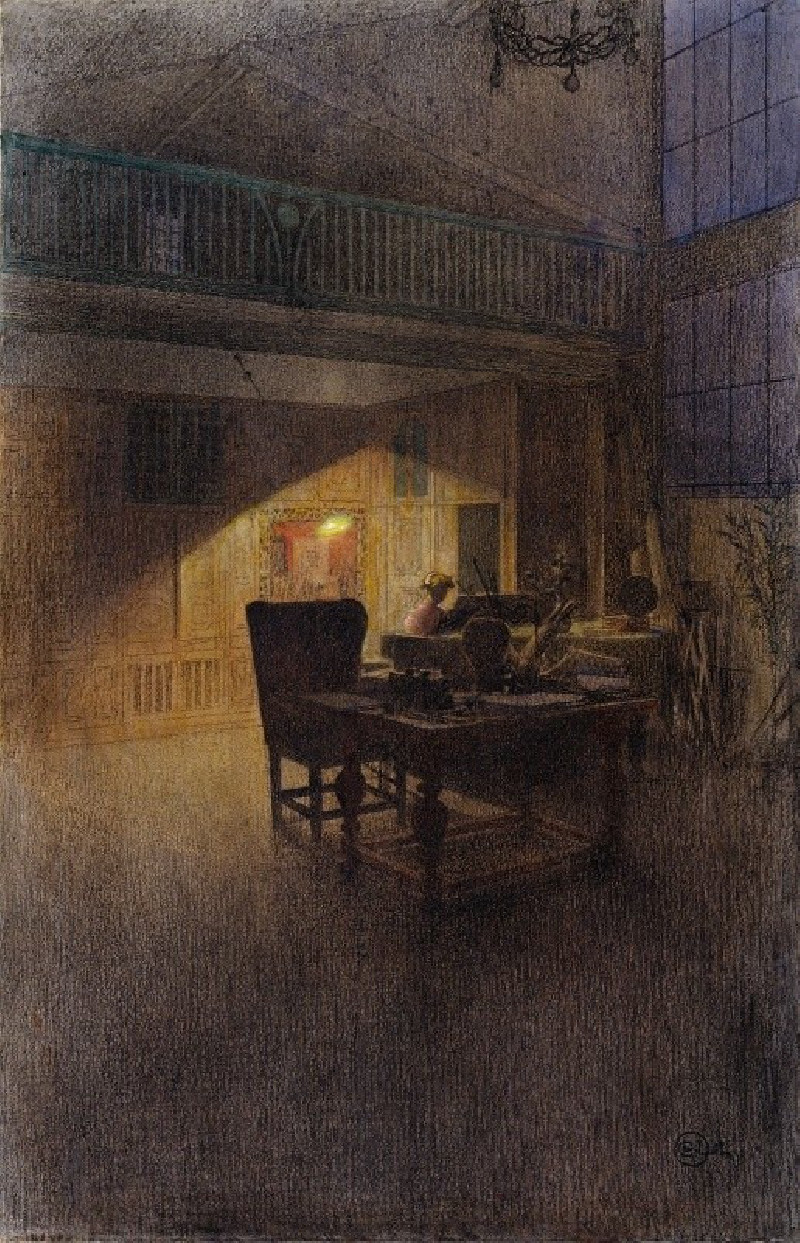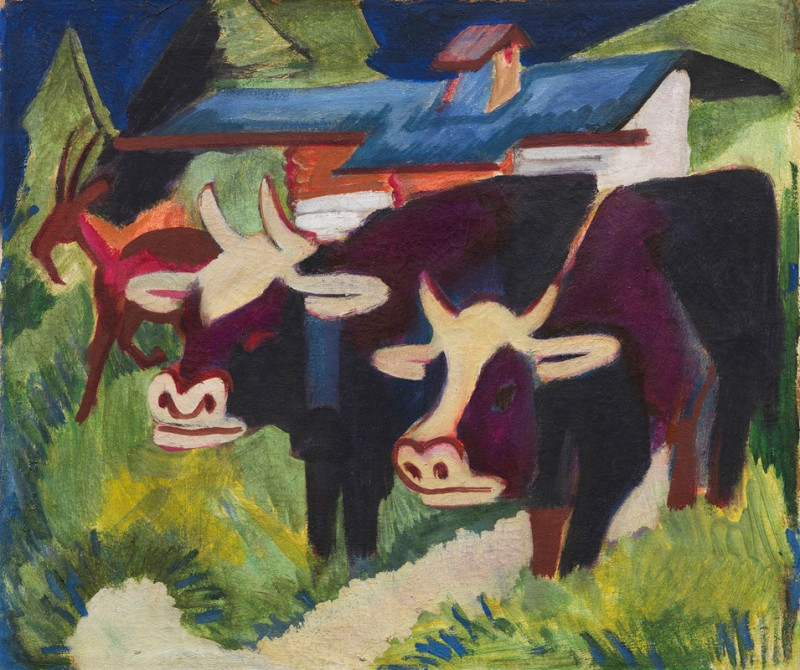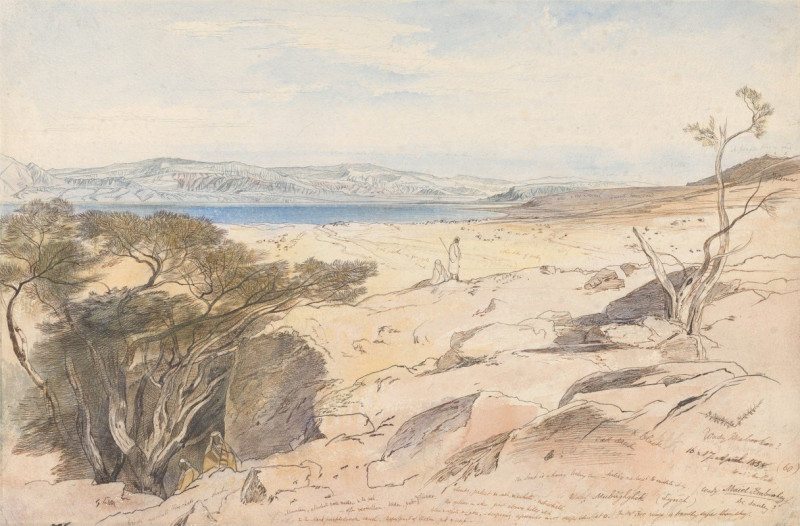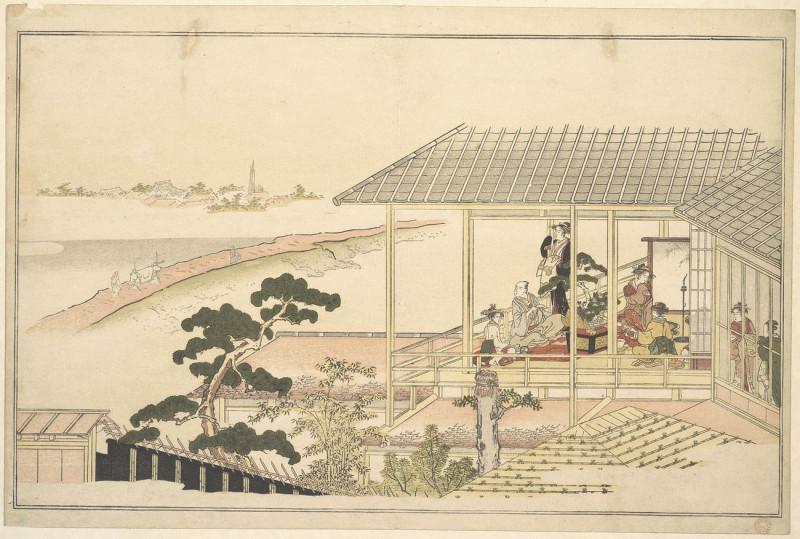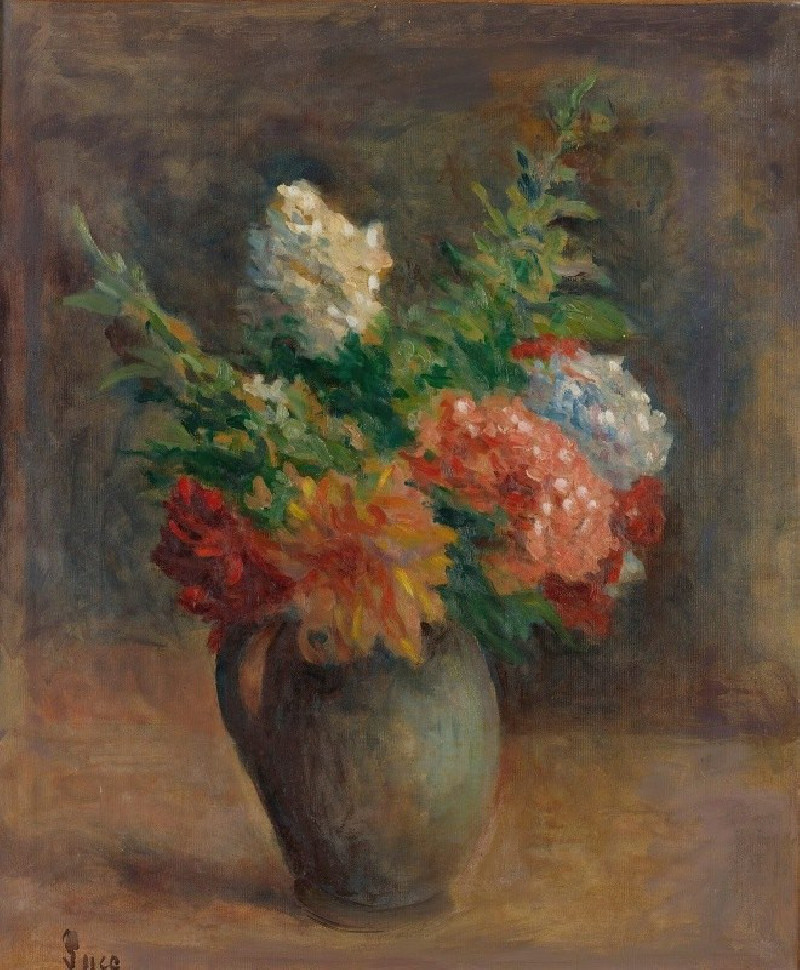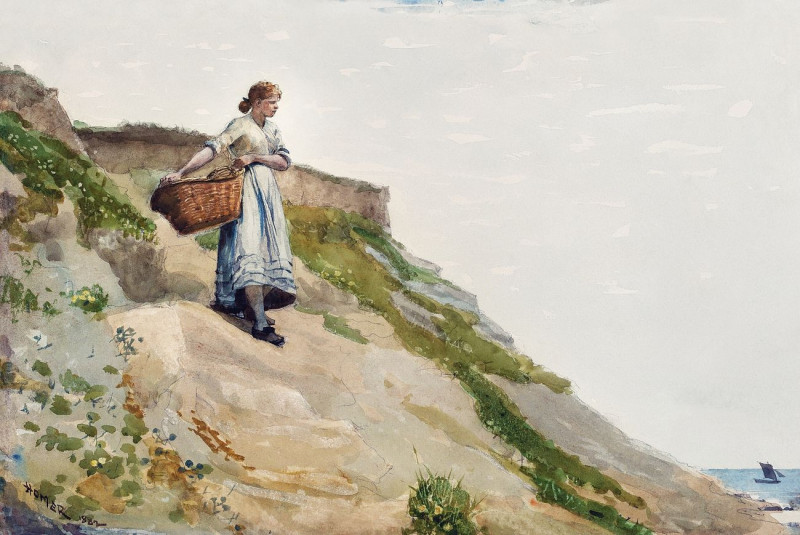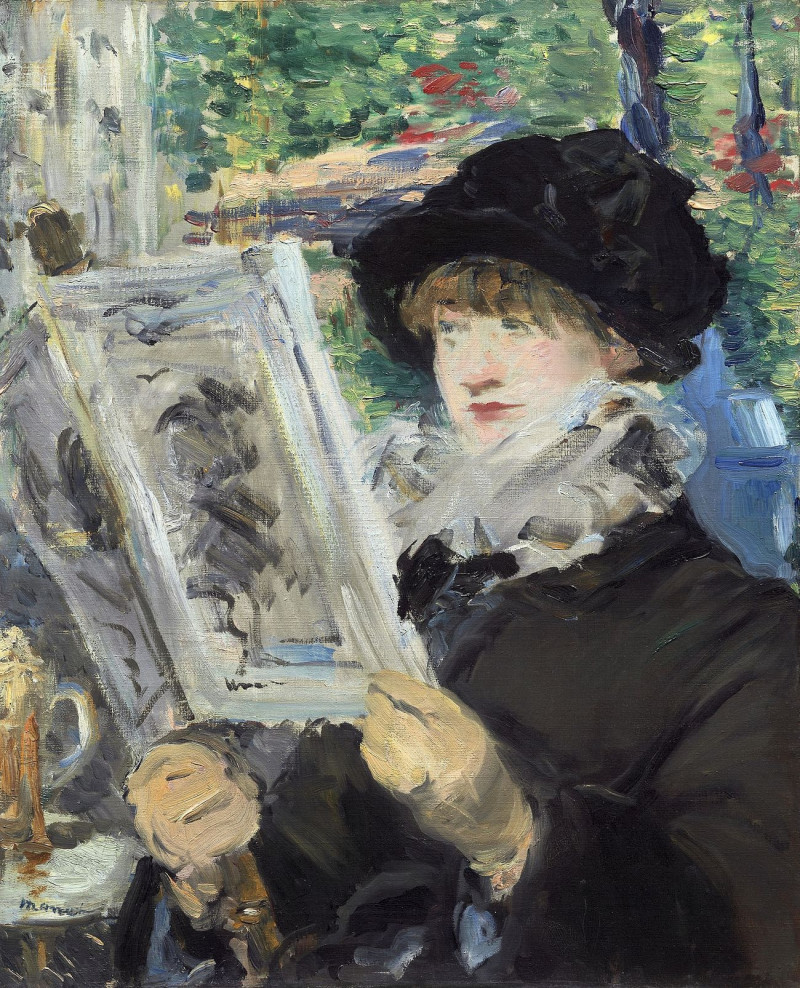Self-Portrait Dedicated to Carrière (1888 or 1889)
Technique: Giclée quality print
Recommended by our customers
More about this artwork
"Self-Portrait Dedicated to Carrière" is a captivating piece by the renowned post-Impressionist artist Paul Gauguin, created in either 1888 or 1889. This striking self-portrait showcases Gauguin's unique blend of emotional depth and bold color usage, characteristics for which he is famed.In the painting, Gauguin presents himself in a direct yet introspective manner. His gaze meets the viewer's, engaging yet subtly distant, reflective of his complex persona. The background's vibrant green complements the earthy tones of his attire, highlighting his face and thoughtful expression.Gauguin's technique here is notable for its textured brushwork and the layering of colors, which add a tactile quality to the image. The painting not only serves as a window into Gauguin's soul but also as a tribute to his friend and fellow artist, Eugène Carrière, suggesting a mutual respect and influence that underscores the work's personal significance.
Delivery
Returns
Eugène Henri Paul Gauguin was a French Post-Impressionist artist. Unappreciated until after his death, Gauguin is now recognized for his experimental use of color and Synthetist style that were distinct from Impressionism. Toward the end of his life, he spent ten years in French Polynesia. The paintings from this time depict people or landscapes from that region.

